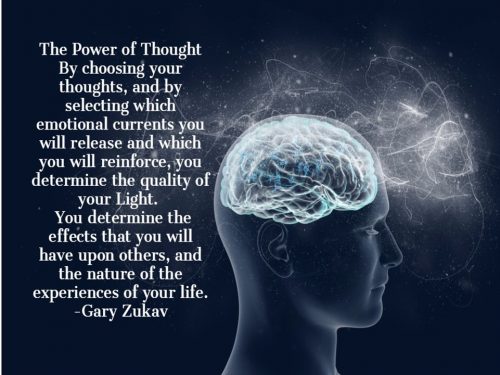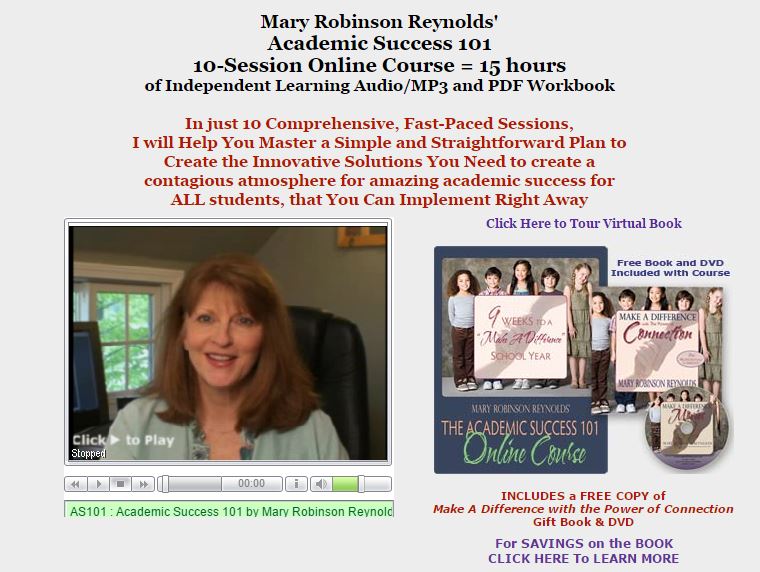Dear Difference Maker,
There is a common sense principle that I think applies beautifully to today’s true story …
Whatever we focus on—put our attention on—expands.
The power of connection is played out through how we label a child, and then is transmitted directly to the child through our attitudes. When we get in touch with our own attitudes, beliefs and resistance about any challenging situation we may be dealing with, we, ourselves, will be transformed.
And when we are personally transformed, we set new energy in motion that will instantaneously affect the lives of those children in our care.
Here is a heart opening story that illustrates the transformative power of relabeling from my book, Make A Difference with the Power of Connection and companion Online Program, Academic Success 101 for Professionals & Parents.
“We all know that good teachers make a positive difference each day. Sometimes we just need to be reminded through success stories.”
– Doris Voitier, Superintendent, St. Bernard Parish Schools; recipient of JFK Profile in Courage Award
R e l a b e l i n g
All children come with kindness and compassion built right in. Our job is not to instill it, but to nurture it and watch it as it grows and blossoms.
You may be wondering how a compassionate act could possibly work with children who appear to be born bullies. Here is a tr ue story about a serious situation involving a hard-to-manage first grader. Through compassion and a conscious choice to understand what was really going on, I discovered his innate goodness, while completely eliminating the need for punishing consequences.
Chip was in first grade when I arrived at his school as counselor. As with any new person on staff, I was brought up to speed on the students I’d be working with, the most troubled children in the school.
The words that both the teachers and the social workers used to describe Chip were heartbreaking: they labeled him a bully, abusive, angry, uncontrollable and evil. It was shocking to me that they felt it was perfectly acceptable to label any child “evil”—let alone a first grader.
How could this little boy, after being in school only two years, have warranted such criticism and disdain?
When they said “evil,” I knew immediately that it was all about…
…that he felt the need to strike out and to hurt others.
Over the next several months, in my support group for boys, I came to know Chip well enough to know that he was neither evil nor uncontrollable. Then, one day, he threw a chair at his teacher. Since the principal was out of the building at the time, Chip was sent to my office. I knew that he had never previously acted with this much violence.
I sat down on a small chair which put me at his eye level, and I asked him what had hurt him so much that made him decide to throw a chair at his teacher.
He replied that his teacher hated him and always had. He felt there was no way to ever get her to like him. So I asked him if he would tell his teacher this, with my help. He agreed, and we called her into my office.
As we talked to the teacher, still seated in the small chair next to Chip, I supported him in expressing his feelings. His teacher responded to his accusation with heartfelt compassion.
She said that she didn’t hate him and, in fact, she actually cared very much about him.
It was clear to both Chip and me that she really meant it. I also knew from having talked with her on other occasions that Chip’s behavior really scared her, so she was often responding out of fear, rather than from the compassionate connection she was now offering him.
Then I asked Chip why he felt that she hated him, and he replied that he knew he was a very, very bad boy, and he didn’t think anyone could ever like him. I was impressed by his ability to articulate his deep-seated belief about himself.
Still sitting on the little chair, I put my left arm on his shoulders. Then I put my other hand on his heart and started affirming what a wonderful, delightful, lovable child I saw him to be.
I explained to him the truth about himself. I told him that it was not about being bad at all, just that he sometimes tried to hurt other people because he hurt so much himself.
Chip’s behavior scared his teacher and she responded out of fear.
I complimented him on just how well I saw him doing in group, and how I saw him taking some risks as he was learning to express his hurt feelings. I affirmed that I knew he would be able to express how he was feeling even better and better as time went on. I told him that being able to say how he felt instead of throwing things would make it easy to be friends with the other kids and his teachers.
I wanted to instill in Chip new, positive thoughts about himself. So I continued to affirm over and over what a wonderful, sweet boy I considered him to be, as I kept touching his heart.
I pointed out how special and brave he was for the work he did with me in learning how to express his hurt feelings.
I told him how proud I was of him for all the efforts I saw him making on the playground and in class, and that more and more children were liking him. I affirmed my belief in his ability to ask for what he needed.
As I was speaking to him, I gradually felt the weight of his entire body coming to rest on my right hand next to his heart. It was a moment in time unlike anything I had experienced before. Like a dry sponge, he was drinking the affirmations into his entire being.
Up to this point, his teacher had feared having him in her classroom because she believed he was an evil boy. Chip’s emotional interpretation of her labeling and her fear of him left him confused, powerless and hurting. It’s natural for children to strike back when they feel they have been hurt. An adult must take the responsibility to help shed light on what has been causing the hurt in the child’s life. Any aggressive act warrants immediate investigation.
When I was finished speaking, Chip’s teacher gave him a big war m hug, told him she loved him and took him back to class. It is my belief that this approach allowed Chip to actually become “a good boy with some hurt that just needed to be worked out.”
Compassion and relabeling had everything to do with the dramatic improvement in his behavior which, I’m pleased to say, followed this incident through the remainder of the school year.
We are a society that labels, so why not select labels that will heal and advance a child’s life experience. Certainly schools will continue to label children to identify additional needs.
You can accept the diagnosis while intending a preferred prognosis.
Labels define our attitudes. You simply cannot have an attitude and keep it a secret. We radiate our thoughts, and others feel this and respond to it. Children by far are the most susceptible to adverse labeling.
A child’s mind is a clear, sensitive palette that receives impressions without protection. Until children are fourteen years of age, their psyches absorb the suggestions and impressions of the predominant adults in their lives.
In my program, Academic Success 101 Self Paced Online Course — I’ve discussed a variety of case studies – success stories – about students who excelled because I relabeled them.
Real life stories will give you more confidence in your own ability to accomplish relabeling for yourself. A new label doesn’t have to be true yet, in order for you to plant the seed. Instead of talking about what you don’t want, shift gears and simply describe in detail what you’d prefer to see happen with this situation. It’s as easy to label someone hopeless as it is to label them capable in their own special way.
Think about it. What’s the best that could happen?
Reaching out …
Mary Robinson Reynolds, M.S.
PS … To get the full story and subsequent trainings about students with similar behavioral issues like Chip’s I encourage you to invest in my Academic Success 101 Online Course. As you can hear from the audio clip testimonials, what I have provided is highly transformational and is simple and straightforward to apply immediately to any situation you may be finding yourself in.










 Dancing Wu Li Masters: An Overview of the New Physics Gary Zukav
Dancing Wu Li Masters: An Overview of the New Physics Gary Zukav


